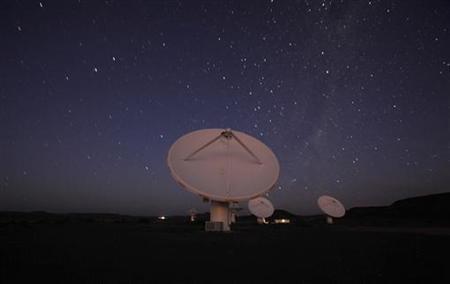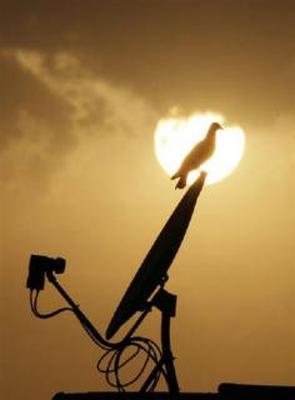Photographs: Mike Hutchings/Reuters BS Bureau in New Delhi
Homes in Delhi, Mumbai and Kolkata that had analogue cable television went blank on Wednesday night.
The Madras High Court has given the residents of Chennai, where only 62 per cent of connections have been digitised, time till November 5 to switch over to the digital system or face a similar blackout.
The latest reports suggest that digitisation has been near universal in Mumbai and 95 per cent in Delhi.
Even Kolkata, where West Bengal Chief Minister Mamata Banerjee is trying to make a political issue of it, 83 per cent of homes are digitised. The rest of the country has to move to digital TV in three phases by December 31, 2014.
...
Digitisation helps broadcasters, more than consumers
Photographs: Reuters
The cable TV chain has three links: the broadcaster who generates the content, the multi-system operator (MSO) who distributes the content, and the local cable operator who provides last-mile connectivity.
Consumers' subscription fees are distributed between all three. In the analogue system, the broadcasters and MSOs say, the cable operators under-declare the subscription numbers by as much as two-thirds and thereby pocket a large chunk of the money that rightfully belongs to them.
As a result, the broadcasters allege, their subscription revenue of Rs 350-400 crore (Rs 3.5 – 4 billion) per annum in the four cities that have gone digital falls way short of the carriage fees of Rs 800 crore (Rs 8 billion) they pay every year.
A digital system will provide a clear picture of the number of TV homes, and the MSOs and broadcasters will see their revenues increase at the expense of cable operators.
...
Digitisation helps broadcasters, more than consumers
Photographs: B Mathur/Reuters
But how does it benefit the consumer? The quality of the signal will improve; and digital cable will carry as many as 500 channels, compared to analogue's 100.
The consumer will be given the power to choose exactly which channels he wants to watch and thereby control his monthly bill. His viewing choice is no longer made by the cable operator.
This also makes it possible for high-end consumers to watch niche pay channels and pay-per-view television, and make those options more profitable. Clearly, MSOs and broadcasters will benefit, too.
All of a sudden, their businesses begin to look very viable. Still, it is the consumer who has to foot the bill for going digital. Analogue homes need to pay Rs 799 for a digital set-top box or Rs 2,500 for a direct-to-home (DTH) connection.
...
Digitisation helps broadcasters, more than consumers
Photographs: Arko Datta/Reuters
The two million analogue homes in the four metros, thus, need to cough up at least Rs 160 crore (Rs 1.6 billion) to move to digital TV. A consumer who wants to stay with analogue cable no longer has the choice.
The only other viewing option is Doordarshan on the national broadcaster's terrestrial network with an old-fashioned antenna.
There is also the fear that the consumer will have to pay more every month. However, it is unlikely that the monthly bill will go up because of the switch to digital cable in the short run.
Intense competition will ensure that the average monthly bill in the four metros stays close to the current Rs 230 per user.
Homes that switched from analogue cable to digital cable or DTH say they haven't seen any significant jump in their monthly bills. The long run could be a different story, of course.






article